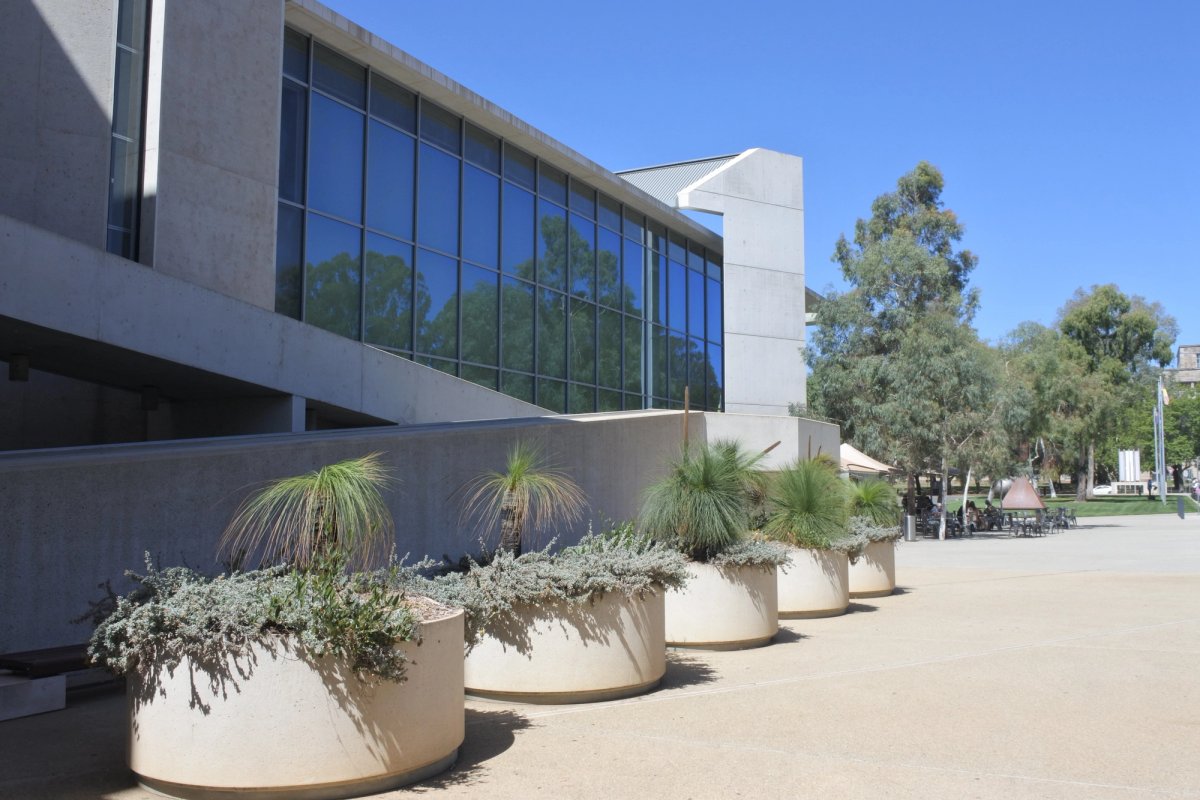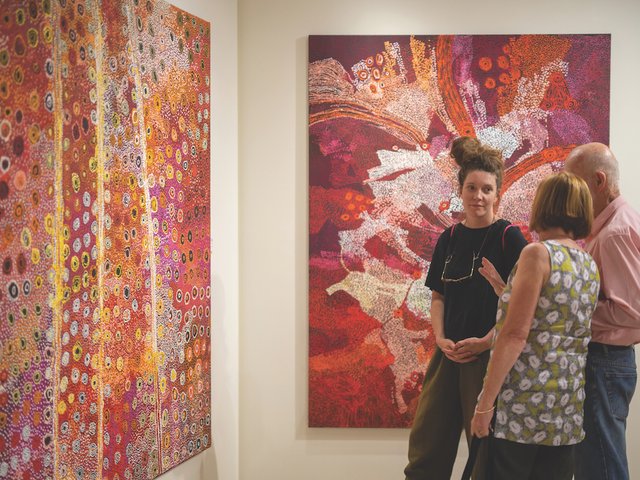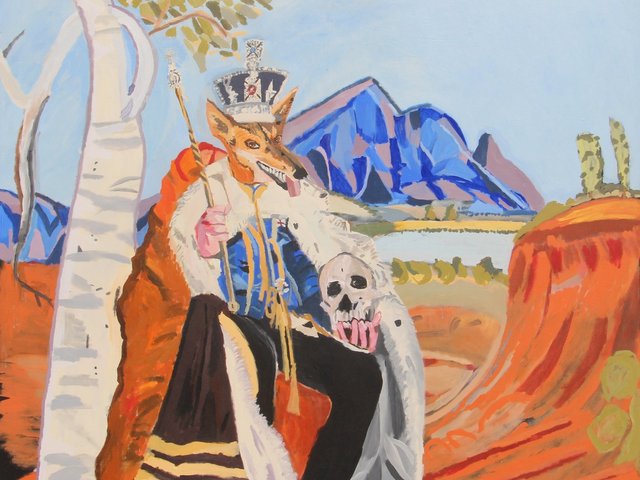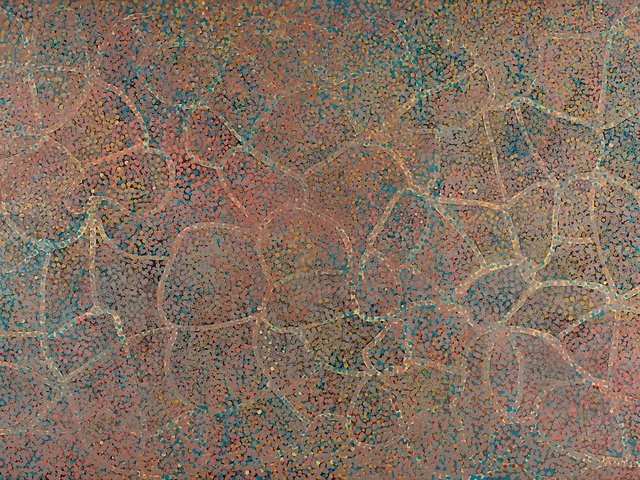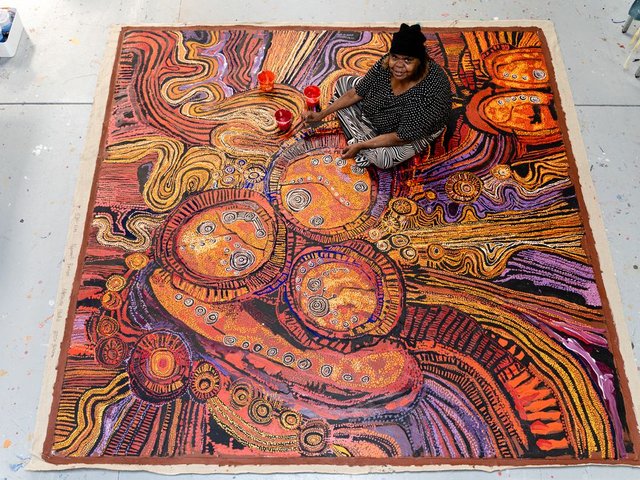John Mawurndjul AM (Balang Nakurulk), a giant of Australian Indigenous art, has died in the isolated settlement of Maningrida, on the Northern Territory coast, near where he lived his whole life.
According to cultural protocols, until the family gives permission, photographs of Balang or his work cannot be published by the media. The same protocols applied to the use of his full name, however that permission has now been granted.
The artist died on 21 December 2024, less than three months after the passing of his partner of 51 years, the renowned artist Bulanjdjan Ngalkardbam (Kay Lindjuwanga).
Balang was born in 1952. He lived in the bush until 1963 when he was brought to Maningrida for leprosy treatment. The leprosy had affected his hands—notable, given the extreme steadiness that his painting technique demanded.
“From the late 1970s he gained a rapidly growing reputation as a painter on bark, deploying intricate cross-hatched patterns called ‘rarrk’,” the Maningrida statement said.
Balang won four Telstra National Aboriginal and Torres Strait Islander Art Awards and the Clemenger Prize. In 2010 he was awarded an Order of Australia “for service to the preservation of Aboriginal culture as the foremost exponent of the Rarrk visual art style”.
Balang was celebrated in Australia with many exhibitions at prestigious museums. He had solo exhibitions at institutions abroad including Museum Tinguely in Basel, Switzerland, and the Sprengel Museum in Hannover, Germany.
He was commissioned to create a work of art onsite at Paris’s Musée du Quai Branly before the museum opened in 2006.
What defined Balang’s work?
Balang’s large oeuvre of paintings in ochres on stringybark exuded power and energy because of the way they were painted, says Nici Cumpston, the curator of Aboriginal and Torres Strait Islander art at the Art Gallery of South Australia (AGSA), to The Art Newspaper.
These works recorded the animals, plants and spirit beings of his homeland. “He would paint the various ancestors and the stories of what happened to them at particular places,” Cumpston says.
The artist would turn and walk away from a painting while he was working on it, then wheel around to see whether it had a “shimmer”, Cumpston says.“He was always looking for the power within the painting,” she continues.
Balang took himself and his practice seriously. “I think it was when he did a trip to the National Gallery of Australia, and he saw some really large scale paintings, that he thought to himself, ‘this is an opportunity; let's go big. This is what artists around the world are making and we can be these people; we are these people,’” Cumpston says.
Cumpston, who is an artist as well as a curator, spent a lot of time with Balang when she co-curated a major retrospective exhibition held at the AGSA in Adelaide and at the Museum of Contemporary Art Australia in Sydney. She also travelled to Berlin with Balang when they were both in the same exhibition.
“We visited a number of museums together, with (Australian teacher) Murray Garde interpreting,” she says. “Balang was able to share his thoughts about art and culture. He really thought deeply about the role of art and ideas; we could see that and we learned from him.”
She continues: “He had that fascination about works of art and artists, and how the world is held within art, not only for his culture but for people internationally.”
Balang had been instrumental in the establishment of the Babbarra Women’s Centre in Maningrida, a space where women make art. “He very much knew that women were the backbone, and was really strong in supporting them,” Cumpston says.
Cumpston will soon leave her role at the AGSA. In May, she will become director of the Kluge-Ruhe Aboriginal Art Collection at the University of Virginia, Charlottesville, Virginia, USA.
The Kluge-Ruhe Aboriginal Art Collection, which includes more than 3,600 artworks, is the only museum outside of Australia dedicated to the exhibition and study of Indigenous Australian art.
- Balang Nakurulk; born 1952; died Maningrida, Northern Territory, Australia; 21 December 2024


